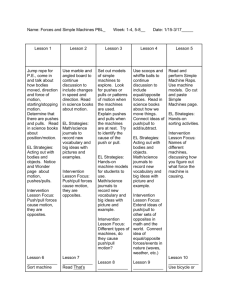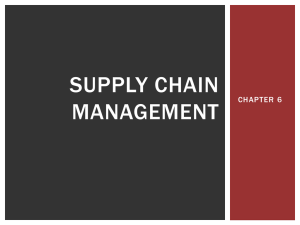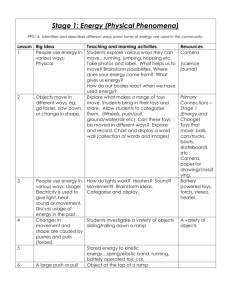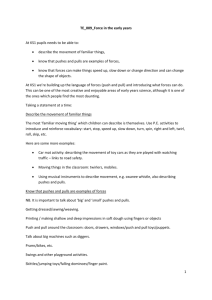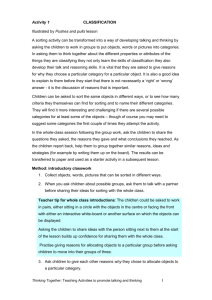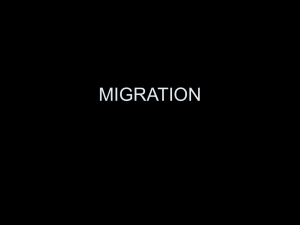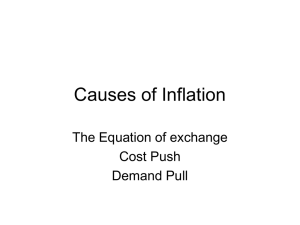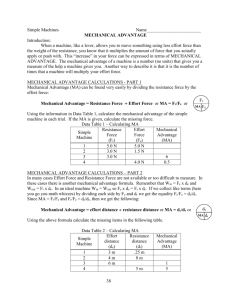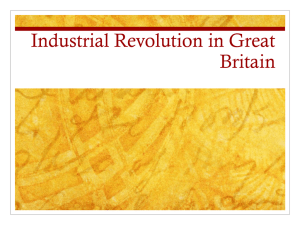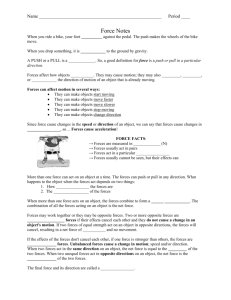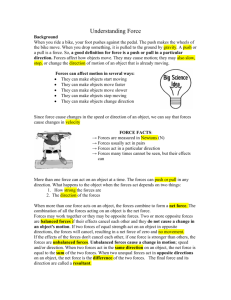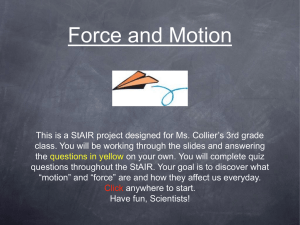Push Pull
advertisement
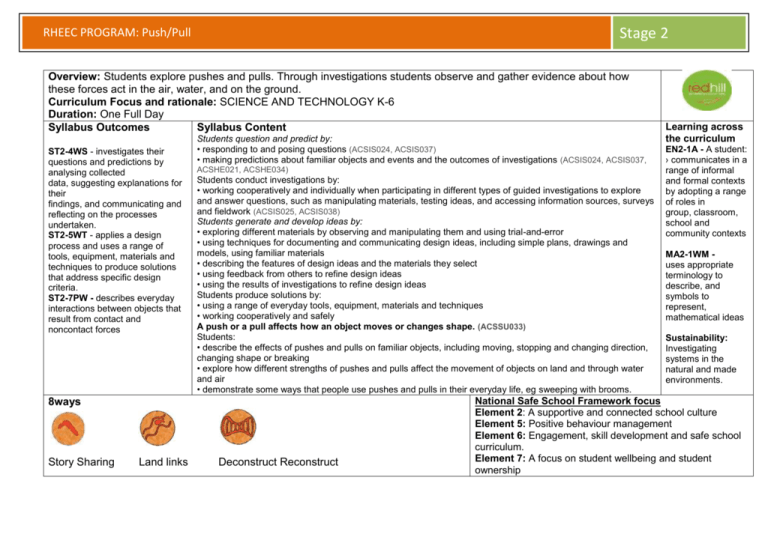
Stage 2 RHEEC PROGRAM: Push/Pull Overview: Students explore pushes and pulls. Through investigations students observe and gather evidence about how these forces act in the air, water, and on the ground. Curriculum Focus and rationale: SCIENCE AND TECHNOLOGY K-6 Duration: One Full Day Syllabus Outcomes Syllabus Content ST2-4WS - investigates their questions and predictions by analysing collected data, suggesting explanations for their findings, and communicating and reflecting on the processes undertaken. ST2-5WT - applies a design process and uses a range of tools, equipment, materials and techniques to produce solutions that address specific design criteria. ST2-7PW - describes everyday interactions between objects that result from contact and noncontact forces Students question and predict by: • responding to and posing questions (ACSIS024, ACSIS037) • making predictions about familiar objects and events and the outcomes of investigations (ACSIS024, ACSIS037, ACSHE021, ACSHE034) Students conduct investigations by: • working cooperatively and individually when participating in different types of guided investigations to explore and answer questions, such as manipulating materials, testing ideas, and accessing information sources, surveys and fieldwork (ACSIS025, ACSIS038) Students generate and develop ideas by: • exploring different materials by observing and manipulating them and using trial-and-error • using techniques for documenting and communicating design ideas, including simple plans, drawings and models, using familiar materials • describing the features of design ideas and the materials they select • using feedback from others to refine design ideas • using the results of investigations to refine design ideas Students produce solutions by: • using a range of everyday tools, equipment, materials and techniques • working cooperatively and safely A push or a pull affects how an object moves or changes shape. (ACSSU033) Students: • describe the effects of pushes and pulls on familiar objects, including moving, stopping and changing direction, changing shape or breaking • explore how different strengths of pushes and pulls affect the movement of objects on land and through water and air • demonstrate some ways that people use pushes and pulls in their everyday life, eg sweeping with brooms. 8ways Story Sharing Land links Deconstruct Reconstruct Learning across the curriculum EN2-1A - A student: › communicates in a range of informal and formal contexts by adopting a range of roles in group, classroom, school and community contexts MA2-1WM uses appropriate terminology to describe, and symbols to represent, mathematical ideas Sustainability: Investigating systems in the natural and made environments. National Safe School Framework focus Element 2: A supportive and connected school culture Element 5: Positive behaviour management Element 6: Engagement, skill development and safe school curriculum. Element 7: A focus on student wellbeing and student ownership RHEEC PROGRAM: Push/Pull Learning Activity One Introduction: RHEEC lead a discussion on Push/ Pull/ forces/gravity/ movement. Learning Activity Two Push/Pull Audit: Students do a push pull audit in groups of 5. (kitchen/ dorm/ outside/ biolab). Investigate balloon racer. Learning Activity Three Push/Pull Games. Students take part in a tug-a-war, using variable line ups and other push/pull games Learning Activity Four Pop Rocket Launcher – Students create a rocket and a launcher using recycled materials. Rockets are tested on the oval. Learning Activity Five Water fun – Students do experiments with RHEEC staff – investigating how changing an objects shape can assist it to float or sink. Conclusion Stage 2 BIOLAB Resources: Power point, Laptop, Data projector, cords box, chair BIOLAB/ Kitchen/Dorm/Outside. Clipboards, Push/Pull Audit sheets OUTSIDE Resources: Rope, witches hats, ball KITCHEN Resources: Poly pipe, gaff tape, cardboard, PET bottles, trundle wheels. BIOLAB Resources: 20L Container, buckets, water, measuring apparatus, plasticine. RHEEC PROGRAM: Push/Pull Stage 2
